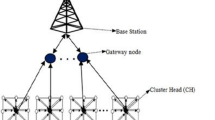Abstract
A new faulty sensor monitoring method based on an adaptive neuro-fuzzy inference system (ANFIS) is proposed to improve the monitoring performance of indoor air quality (IAQ) in subway stations. To enhance network performance, a data preprocessing step for detecting outliers and treating missing data is implemented before building the monitoring models. A squared prediction error (SPE) monitoring index based on the ANFIS prediction model is proposed to detect sensor faults, where the confidence limit for the SPE index is determined by using the kernel density estimation method. The proposed monitoring approach is applied to detect four typical kinds of sensor faults that may happen in the indoor space of a subway. The prediction results in the subway system indicate that the prediction accuracy of an ANFIS structure with 15 clusters is superior to that of an appropriate artificial neural network structure. Specifically, when detecting one kind of complete failure fault that happened within the normal range, the detection performance of ANFIS-based SPE outperforms that of a traditional principal component analysis method. The developed sensor monitoring technique could work well for other kinds of sensor faults resulting from a noxious underground environment.
Similar content being viewed by others
References
D.-U. Park and K.-C. Ha, Environ. Int., 34, 629 (2008).
X. Ye, Z. Lian, C. Jiang, Z. Zhou and H. Chen, Environ. Monit. Assess, 167, 643 (2010).
L. Y. Chan, W. L. Lau, X. M. Wang and J. H. Tang, Environ. Int., 29, 429 (2003).
J. H. Cho, K. Hee Min and N. W. Paik, Int. J. Hyg. Environ. Heal., 209, 249 (2006).
Y. Feng, C. Mu, J. Zhai, J. Li and T. Zou, J. Hazard. Mater., 183, 574 (2010).
J. S. Pandey, R. Kumar and S. Devotta, Atmos. Environ., 39, 6868 (2005).
C. K. Yoo, K. Villez, S. W. Van Hulle and P. A. Vanrolleghem, Environmetrics, 19, 602 (2008).
R. Dunia, S. J. Qin, T. F. Edgar and T. J. McAvoy, AIChE J., 42, 2797 (1996).
V. Venkatasubramanian, R. Rengaswamy, S. N. Kavuri and K. Yin, Comput. Chem. Eng., 27, 327 (2003).
J. C. M. Pires, S. I. V. Sousa, M. C. Pereira, M. C. M. Alvim-Ferraz and F. G. Martins, Atmos. Environ., 42, 1249 (2008).
J. Lau, W. T. Hung and C. S. Cheung, Atmos. Environ., 43, 769 (2009).
Y. Kim, J. T. Kim, I. Kim, J.-C. Kim and C. Yoo, Environ. Eng. Sci., 27, 721 (2010).
H. Liu, M. Kim, O. Kang, B. Sankararao, J. T. Kim, J.-C. Kim and C. K. Yoo, Indoor Built Environ., 21, 205 (2012).
L. H. Chiang, E. L. Russell and R. D. Braatz, Fault detection and diagnosis in industrial systems, Springer-Verlag (2001).
S. J. Qin, J. Chemometrics, 17, 480 (2003).
W. Ku, R. H. Storer and C. Georgakis, Chemometr. Intell. Lab, 30, 179 (1995).
J. Chen and K.-C. Liu, Chem. Eng. Sci., 57, 63 (2002).
S. Haykin, Neural networks, Prentice-Hall (1999).
J.-M. Lee, C. Yoo, S. W. Choi, P. A. Vanrolleghem and I.-B. Lee, Chem. Eng. Sci., 59, 223 (2004).
Z. Ge, C. Yang and Z. Song, Chem. Eng. Sci., 64, 2245 (2009).
M. A. Kramer, AIChE J., 37, 233 (1991).
D. Dong and T. J. McAvoy, Comput. Chem. Eng., 20, 65 (1996).
J. Chen and C.-M. Liao, J. Process. Contr., 12, 277 (2002).
J. Zhang, Comput. Chem. Eng., 30, 558 (2006).
J. S. R. Jang, IEEE Trans. Syst. Man Cybern., 23, 665 (1993).
T. Y. Pai, T. J. Wan, S. T. Hsu, T. C. Chang, Y. P. Tsai, C. Y. Lin, H. C. Su and L. F. Yu, Comput. Chem. Eng., 33, 1272 (2009).
C. K. Lau, Y. S. Heng, M. A. Hussain and M. I. M. Nor, ISA Trans., 49, 559 (2010).
M. Huang, J. Wan, Y. Ma, H. Zhang, Y. Wang, C. Wei, H. Liu and C. Yoo, Ind. Eng. Chem. Res., 50, 13500 (2011).
M. Huang, J. Wan, Y. Wang, Y. Ma, H. Zhang, H. Liu, Z. Hu and C. Yoo, Korean J. Chem. Eng., 29(5), 636 (2012).
J. S. R. Jang, C. T. Sun and E. Mizutani, Neuro-fuzzy and soft computing: A computational approach to learning and machine intelligence, Prentice Hall (1997).
T. Takagi and M. Sugeno, IEEE Trans. Syst. Man Cybern., 15, 116 (1985).
M. Sugeno and G. T. Kang, Fuzzy Set. Syst., 28, 15 (1988).
J. Jackson, A user’s guide to principal components, Wiley (1991).
B. M. Wise and N. B. Gallagher, J. Process. Contr., 6, 329 (1996).
S. J. Qin and R. Dunia, J. Process. Contr., 10, 245 (2000).
Q. Chen, R. J. Wynne, P. Goulding and D. Sandoz, Control Eng. Pract., 8, 531 (2000).
E. B. Martin and A. J. Morris, J. Process. Contr., 6, 349 (1996).
I. Jolliffe, Principal component analysis, Springer-Verlag (2002).
P. R. C. Nelson, P. A. Taylor and J. F. MacGregor, Chemometr. Intell. Lab, 35, 45 (1996).
I. Stanimirova, M. Daszykowski and B. Walczak, Talanta, 72, 172 (2007).
T. Chen, E. Martin and G. Montague, Comput. Stat. Data. An., 53, 3706 (2009).
M. J. Nieuwenhuijsen, J. E. Gómez-Perales and R. N. Colvile, Atmos. Environ., 41, 7995 (2007).
J. Yu, J. Process. Contr., 22, 1358 (2012).
Author information
Authors and Affiliations
Corresponding author
Rights and permissions
About this article
Cite this article
Liu, H., Huang, M., Kim, J.T. et al. Adaptive neuro-fuzzy inference system based faulty sensor monitoring of indoor air quality in a subway station. Korean J. Chem. Eng. 30, 528–539 (2013). https://doi.org/10.1007/s11814-012-0197-7
Received:
Accepted:
Published:
Issue Date:
DOI: https://doi.org/10.1007/s11814-012-0197-7




